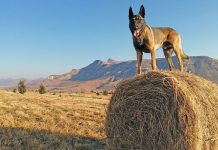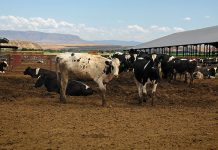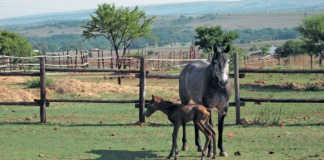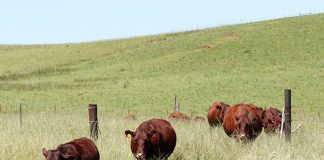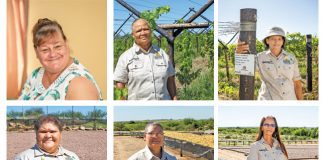
Photo: Supplied
Located in the heart of the southern Drakensberg, the Mzimkulu Vulture Hide is fitted with one-way glass designed for clear photography and allows up to six guests to comfortably view and photograph endangered vultures, as well as other birds, for a good cause.
READ Sustainable game farming in the bushveld

The hide is also equipped with educational material to ensure visitors leave having learnt more about conservation and wildlife in the region.
Conservation partnership
The Mzimkulu Vulture Hide forms part of Wildlife ACT’s Southern Drakensberg Conservation Project and has been made possible by a collaborative effort between Wildlife ACT and Riverlea Farm.
The primary objective of this initiative is to provide the Southern Drakensberg with a sustainable safe feeding site for vultures.
Important partners include Ezemvelo KZN Wildlife, Project Vulture, Drakensberg Conservation Initiative, Bearded Vulture Recovery Programme and the Endangered Wildlife Trust.
The creation of the hide has been made possible by Invicta Wildlife, CHEP, and European Outdoor Conservation Association.
The support of local Underberg farms has also been crucial to making this important Vulture Safe Feeding Site possible.
The importance of vulture conservation in the region
Vultures are nature’s clean-up crew, scavenging and disposing of animal remains that could otherwise become breeding grounds for disease.
By swiftly recycling organic matter, vultures help prevent the spread of illnesses that could affect both humans and animals.
READ The benefits of conservation agriculture
In spite of their importance, vulture numbers across Africa are in rapid decline and their range numbers have decreased by up to 70%.
Of the six vulture species that occur in South Africa, all are either vulnerable, endangered, or critically endangered. Despite being critical to our ecosystems, their numbers are in serious decline, with only 50 to 100 breeding pairs of Bearded Vulture in South Africa and Lesotho and about 4 500 breeding pairs of Cape Vulture left in South Africa.
Importance of safe-feeding sites
Vulture safe-feeding sites or vulture restaurants are areas where uncontaminated carcasses are intentionally placed to provide a safe and sustainable supplementary food source for vultures, to help ensure their survival and contribute to the ecological balance.
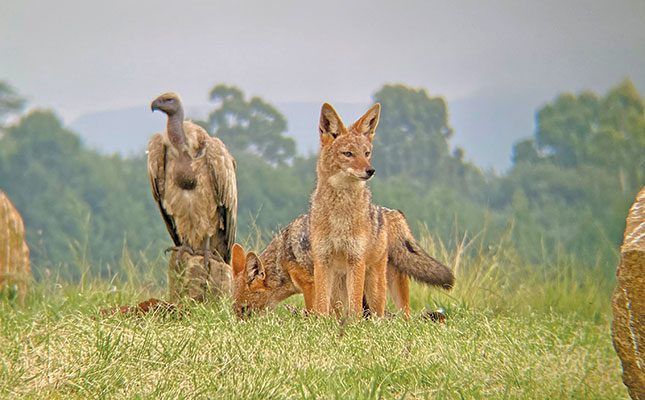
The Southern Drakensberg is a stronghold location for two of South Africa’s cliff-nesting species of vulture, namely the Bearded Vulture and Cape Vulture.
As such, it is essential for conservation initiatives to be spearheaded in this region, aimed at preserving and protecting this crucial population of endangered birds.
The implementation of a vulture safe-feeding zone is one such initiative that
has started strongly with vital support from the Drakensberg Conservation Initiative and Ezemvelo KZN Wildlife in collaboration with Wildlife ACT and Riverlea Farm; as the essential input of local farmers and landowners.
Vulture feeding sites may also incorporate hides, allowing photographers and conservation enthusiasts to have a close-up view of these incredible birds and other animals that frequent the sites.
In addition to increasing public awareness about the challenges faced by vultures, these hides serve an important role in ecotourism, with the potential to generate revenue to sustain vulture conservation initiatives.This is the hope for the Mzimkulu Vulture Hide.
A stronghold for South Africa’s cliff-nesting vultures
The Mzimkulu Vulture Hide is located 8km from Underberg in KwaZulu-Natal’s Southern Drakensberg.
The hide location rests at the foot of the Maloti-Drakensberg Park, which is a World Heritage Site and one of the five largest protected areas in South Africa, providing one of the last strongholds for several threatened and endangered species.
The Maloti-Drakensberg Park World Heritage Site is renowned for its spectacular natural landscape, importance as a haven for many threatened and endemic species, and for its wealth of rock paintings made by the San people over a period of 4 000 years.
READ Dropping fences helps game reserve and community thrive
The heritage site covers an area of 249 313ha making it the largest protected-area complex along the Great Escarpment of Southern Africa.
Extending along most of KwaZulu-Natal’s south-western border with Lesotho, the property provides a vital refuge for more than 250 endemic plant species and their associated fauna.
It also holds almost all of the remaining subalpine and alpine vegetation in KwaZulu-Natal including extensive high-altitude wetlands.
The uKhahlamba Drakensberg Park has been identified as an important bird area, and forms a critical part of the Lesotho Highlands Endemic Bird Area.
How to book
It is essential to book at least 48 hours in advance before visiting the Mzimkulu Vulture Hide.
Bookings can be made via email [email protected] or through the website
www.saveourvultures.com.
The entrance fee for four hours is R300 per person, R150 for children 16 and under (children under six cannot be accommodated at the hide).
It is possible to book the hide exclusively for the day at a cost of R1 500.
The hide can accommodate a maximum of six visitors at a time.
Bookings may be limited to reduce disturbances to the Vulture Safe Feeding Site, so reservations should be made well in advance to avoid disappointment.
Visitors are asked to be respectful of the space at all times by keeping volumes to a minimum to prevent disturbing the birds.
The funds raised through visitor bookings are used to keep the Vulture Safe Feeding Site and Hide operational.
Visit saveourvultures.com, or email [email protected].

